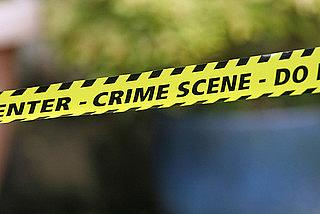Tips for Interviewing Children After A Tragedy

In the wake of senseless tragedies like the horrific massacre at Sandy Hook Elementary School in Newtown, Conn., Americans search for answers. We look to our political leaders, our faith leaders, and our police investigators for explanations. We also look to our media to help us understand what happened, how and why.
Journalists are human beings first. Some of us are parents who have or have had children in elementary schools; we have siblings, partners or parents who are or were elementary school teachers. Some of us are gun owners and some of us have family members with serious mental health challenges. We have to stay in touch with our own humanity as we pursue the many layers of this story. We have to remember that people are raw and need to be treated with tenderness.
On Friday, I streamed live coverage of the news as it was breaking. Honestly, I felt relieved I no longer worked in an adrenaline-charged daily newsroom where editors and reporters need to figure out what to do in a heartbeat, with little real information available.
Mallary Tenore of the Poynter Institute called to ask about guidelines for interviewing children. I told her that journalists need to remember that no one, no child nor adult, is required to talk to you. Journalists must identify themselves and make sure children understand they are being recorded, that what they say is being written down to share with readers or listeners or viewers. And reporters should have parental permission before naming or quoting a child in the press.
But more importantly, journalists must be compassionate and careful not to re-traumatize people, especially kids, by forcing them to recount details that may be haunting. The National Child Traumatic Stress Network has an excellent package of materials on childhood traumatic grief, as does the Dart Center for Journalism & Trauma.
And soon, the Journalism Center on Children and Families will release a training module offering best practices on covering child death. Developed by former Denver Post columnist Susan Greene, the online resource includes interviews with reporters who’ve won Casey Medals for Meritorious Journalism for their powerful and sensitive work covering child abuse and neglect, accidents, violence, and infant mortality from disease. Journalists will find tips for interviewing children, writing obituaries, and much more.
But for now, attention has turned from Hurricane Sandy to Sandy Hook. Americans will look to the media for resources on how to cope with this national tragedy, how to talk with their children in age appropriate ways. The most comprehensive resource I’ve found comes from the Center for School Mental Health at the University of Maryland’s School of Medicine.
The shootings in Newtown, Connecticut will lead journalists to ask tough and obvious questions about public policy issues like school safety and gun control. Those are questions that need to be addressed to politicians and police officers and gun manufacturers and educators and citizens alike.
But we must also talk about mental health – and not just the mental health of those who have survived a traumatic incidence of carnage or grieving the unbearable loss of a loved one. We must talk about the mental health of the perpetrator, the murderer in our midst.
We must look around and take notice of people who are isolated, alienated, disconnected, who may need professional intervention and mental health services. Journalists should investigate whether there are functional systems in place for identifying and helping people at risk of committing violence against themselves or others. Where are the gaps? And, what should families and neighbors and co-workers do about someone who seems deeply troubled?
This is not a call out to call in the authorities on everyone who seems or acts a little strange. It’s about taking collective responsibility for the kind of peaceful and caring society we aspire to be.
And journalists can start that conversation by talking to medical and mental health professionals so that a human, humane warning system is ready to sound the alarm and save lives. The children of Sandy Hook Elementary School and every school in the U.S. deserve no less.
Image by Alan Cleaver via Flickr

